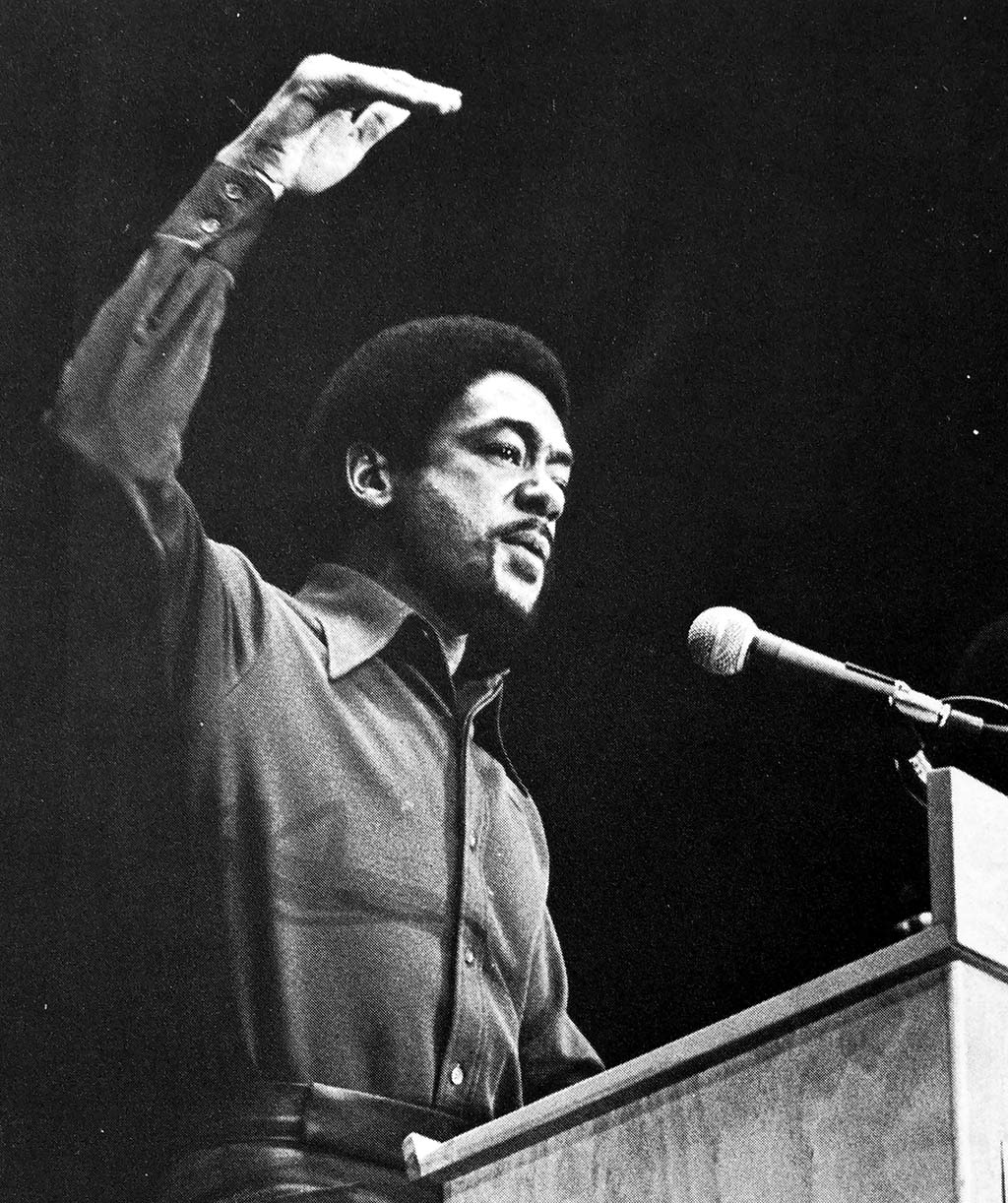Bobby Seale (1936 - )
Thu Oct 22, 1936

Bobby Seale, born on this day in 1936, was, with Huey Newton, a founding member of the Black Panther Party. "The people have now come to realize that the only way to deal with the oppressor is to deal on our own terms and this was done."
While studying at Merritt Community College, Seale joined the Afro-American Association (AAA), a group on the campus devoted to self-education about African and African-American history. Through the AAA group, Seale met Huey Newton.
In an interview recorded for the 1990 documentary "Eyes on the Prize II", Seale described the founding of the BPP in his own words:
"Black Panther Party, 1966, when Huey and I founded that organization, that particular year, numerous acts of police brutality had sparked a lot of spontaneous riots, something that Huey and I were against, the spontaneous riots.
...
And we sit down and began to write out this Ten-Point Platform and Program in the North Oakland Neighborhood Service Center in North Oakland, California, in the community where Huey and I lived. And we wrote out this program.
'We want power to determine our own destiny in our own Black community', alluding to the needs to be organized-political electoral power. Full employment, decent housing, decent education that taught us about our true selves, not to have to fight in Vietnam, immediate end to police brutality and murder of back people was point number seven.
The right to have juries of our peers in the courts, what have you. We summed it up. We wanted land, bread, housing, education, clothing, justice, and peace. And, in the tail end, we stuck in two famous paragraphs: 'When in the course of human events it becomes necessary for one people to separate themself from the political bondage' - that was the emphasis, the political bondage - 'which have connected them with another, and to assume among the powers of the Earth the separate and equal station to which the laws of nature and nature's God entitled them.'
I mean, this was the kind of summarization we gave to our meaning. And we summarized that Ten-Point Platform Program, flipped a coin to see who would be chairman. I won chairman and we created the Black Panther Party."
Bobby Seale was also one of the original "Chicago Eight" defendants charged with conspiracy and inciting a riot in the wake of protests during the 1968 Democratic National Convention in Chicago.
During the trial, Seale, the only black member of the Chicago Eight, was repeatedly bound and gagged. Although he was ultimately not convicted, Seale was sentenced to four years in prison for contempt of court.
In 1973, Seale ran for Mayor of Oakland, California. He received the second-most votes in a field of nine candidates, but ultimately lost in a run-off with incumbent Mayor John Reading.
Among Seale's works are Seize the Time: The Story of The Black Panther Party and Huey P. Newton (1970), A Lonely Rage: The Autobiography of Bobby Seale (1978), and Power to the People: The World of the Black Panthers (2016).